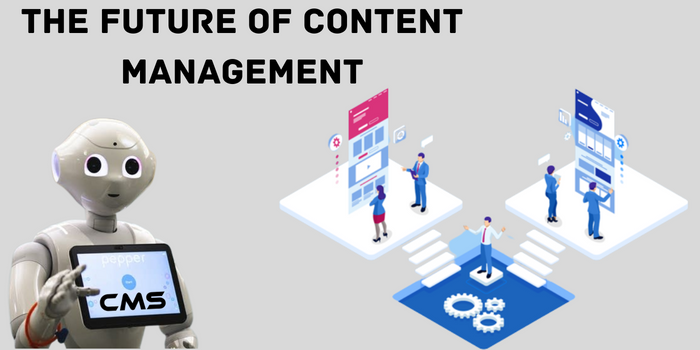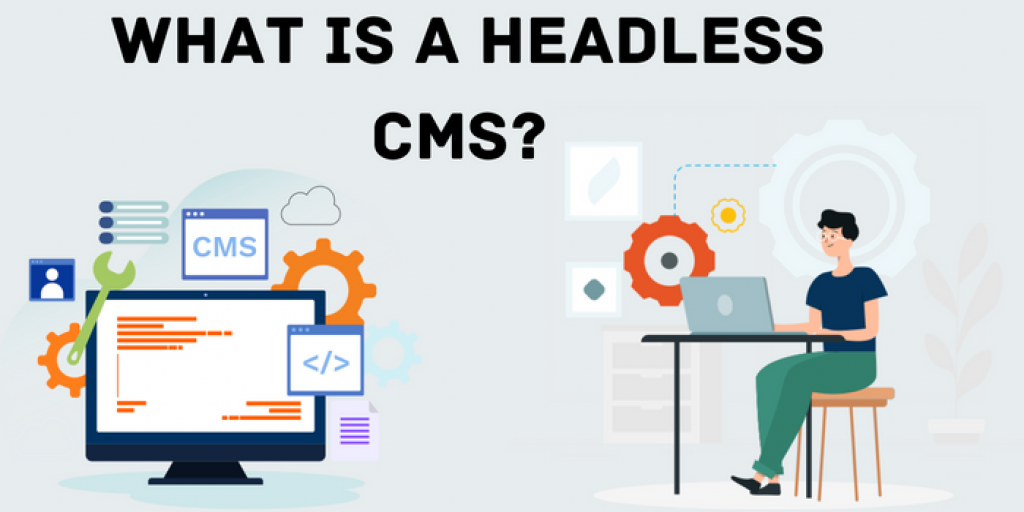
Scalability should be considered when deciding which digital assets will actually work for your organization. You will be able to keep up with the constantly shifting landscape of technology platforms and content delivery networks this way.
Handling and stashing content for articles, products, and other items has an impact on the overall app and web performance, as well as accessibility and conversion. As a result, enterprises should evaluate their needs and consider alternatives to traditional content management systems (CMS).
In this headless guide, we will talk about headless CMS solutions as an alternative to conventional CMSes.
What is a headless CMS?

Comprehending headless CMS is quite simple, despite its intimidating initial appearance. A headless CMS is made up of back-end and API technology that stores and sends content to the chosen front end, which the end user is most likely not going to see.
Only the site’s back end displays the distinction between a headless CMS and a conventional CMS. In other words, separate software is used to manage storage and delivery. Each component of the system can concentrate on its area of expertise, and your process flow can become more efficient with devoted tools for authoring, organizing, and presenting data to users.
An undefined presentation environment or front-end system characterizes a headless CMS. Headless increases the security and flexibility of your content by dividing the processes of content creation, maintenance, and storage from those of distribution and display.
Does it function for your business?
Headless CMS is advantageous for content integration customization, has greater security benefits, and generally performs better when distributing information to the ultimate user. Omnichannel selling as well as content management that may be converted into any version works best with headless CMS. It enables features to gain more character and be more customizable, enhancing the online experience.
In order to customize, integrate, and secure omnichannel marketing, your business may want to think about using a headless CMS. With the front end and back end separated, content and design have more room for customization as opposed to just a templated layout. With a headless CMS, development has more freedom to plan and design the site infrastructure. This would be perfect for a business with a committed group of developers.
What benefits do you expect from headless CMS?
The following are the benefits you will get from using headless CMS, such as Kontent.ai:
- Omnichannel architecture: The ability to deliver compelling content consistently across all touch points (devices and channels) is provided by headless CMS
- Higher flexibility: With a headless CMS, you can use any language, tool, or framework to create your frontend.
- Cost-effective: Users can use CMS without having to hire large teams of experts, which lowers the overall cost
- Enhanced security: Users do not need to be concerned about the presentation layer’s security problems affecting the database because it is not connected to it.
- Easily scalable: Because the backend and frontend layers are kept separate from one another, the website does not experience downtime or any performance issues if there is a problem or maintenance requirement
- Future Proof: One can configure the content to make it adaptable to future needs because the display and data layers are separated
Why might you continue using the conventional CMS?
Although headless CMS may appear to be the most cutting-edge and modern technology to integrate into your website, doing so can be difficult and take time during the initial development. If you want also to create amazing and human-like content then you can just use ChatGPT, which offers to write human-like articles if it is not available at your location then you can use the ChatGPT VPN to enable it in your location easily.
Avoid headless CMS options if your main goal is to increase your web presence. When integrating content for mobile to the website or any other platform, this tool necessitates more technical knowledge and lacks choices for content preview.
A user used to straightforwardly formatted options may become more perplexed as there are more options available with the headless CMS. Headless CMS, such as Kontent.ai, is a good option if more extensive custom development is required. Traditional CMS may be for you if you want something that has already been formatted and prepped for use. Traditional CMSs, particularly Drupal and WordPress, have become very popular in the development community for a reason.
Conclusion
The main goals should always be flexible as well as making sure that cutting-edge solutions provide the best possible user experience. Through these powerful features and cutting-edge technologies, website owners can best future-proof their websites and create more interactive user experiences. It is crucial to choose the best option for platform development.


